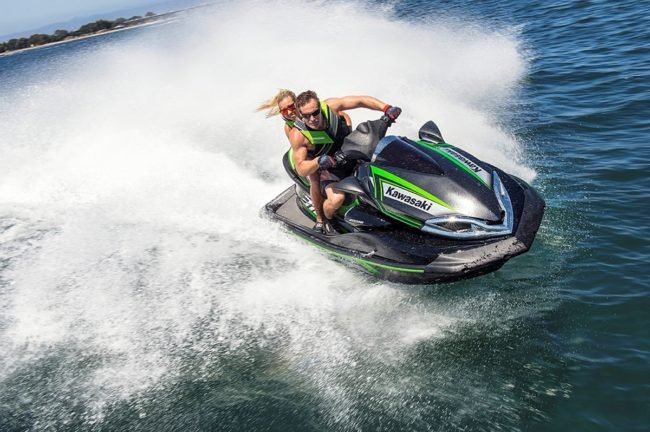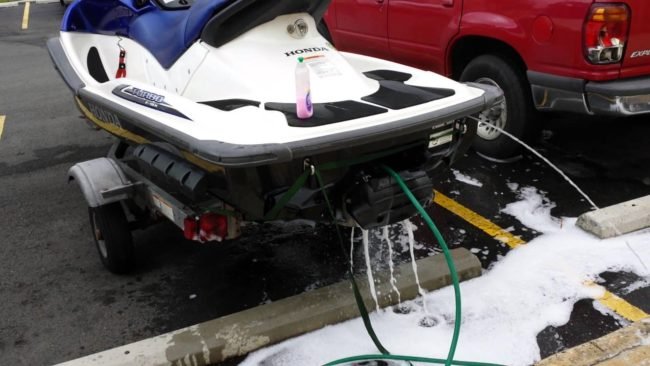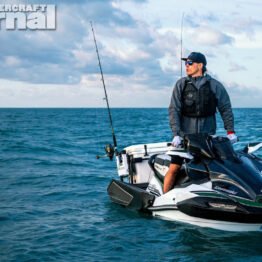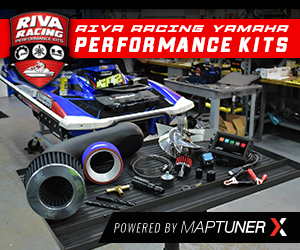
Many PWC owners have a strong bond with their machine. Some view them as a hobby where-as others view them as a passion; a lifestyle. In other aspects, they are investments. Not only investments of money but an investment for fun. PWC’s are not cheap by any means, there-fore proper maintenance procedures and habits should always be followed to ensure your PWC is always in top shape and ready to tear up the water!
In an article by Mandy Brown for Boat Gold Coast, she has come up with an absolutely fantastic list of recommended maintenance tips that you should always do before putting your PWC away after a day of fun on the lake. Following these tips will help keep your PWC looking and performing brand new for many years to come! Below we’ve included the complete unaltered list as well as many of Mandy’s tips verbatim:
Open the bung plugs. This will allow the debris build-up in the hull (leaves and sand) to wash away easily, preventing blockages in bilge systems and damage to the hull that lead to disaster.

Washing:
- Chock the trailer wheels carefully. Place the jockey wheel onto a crate to lift the front of the ski allowing the hull to drain.
- Hose the ski down from top to toe, inside and outside. Ensure that water does not enter the fuel breather, air intake or coils, and electrical areas.
- Ensure you clean under the fuel tank, motor and coupler where the siphon bilge can become blocked. Pay attention to the supercharger belt and pulley if your ski has them.
- Don’t forget to clean your tubs and seats, esp. underneath and the clips, to wash out salt and sand.
- Pay attention to cleaning out the pump area at the back and spray through the prop to clean the intake area to avoid corrosion from the salt. You may need to raise the reverse bucket to gain clear access and avoid spraying into the exhaust outlet.
- Rinse off lightly inside and out with fresh water and wipe dry with a soft microfiber cloth.
- Any remaining water in the hull should be pumped out using a hand pump.
Flush Engine:
- Even after fresh water use, flushing is recommended to remove any sand and algae weed from the cooling system and pump.
- To do this, ensure the ski is on a level position. Depending on the make and model, your owner’s manual will explain how to flush, and indicate if your intercooler is on a separate line.
- Gently “blow” any remaining water out of the water box by blipping your throttle. Your owner’s manual will offer the recommended maximum revolutions while out of the water, with no cooling or backpressure to the prop. DO NOT do this at the ramp before flushing, as it will “cook” the salt into the internal components.
Quick tip: You can use additives with a mild metal cleaner to keep the components clean and prevent corrosion and mineral build-up.
Post-ride checks:
- Ensure your engine is level and the engine has been idle for at least five minutes.
- Pull out the dipstick to check the oil by wiping it clean and re-dipping. It should sit within the manufacturer’s specifications indicated in your owner’s manual. If it has any milkiness to it you should contact your service agent as soon as possible, as this means water has made its way in there and extreme damage can occur.
- If the oil level has dropped, check the oil filter for leaks and look over the motor. If there are no leaks or apparent damage, refill to the correct level with the specified oil. If you are unable to explain the loss of oil, contact your service agent.
- If your ski has closed-loop cooling, check the coolant level at the same time.
- Using a flashlight, look into the hull and check for any disconnected hoses or items that may have come loose.
- Inspect the pump at the back to look for any damage to the prop or liner/wearing.
- Inspect the outside of the hull for any damage from rocks, as this may worsen if left unrepaired.
- Check over your trailer for tire and bearing condition, corrosion build-up (especially around the forgotten jockey wheel/hitch area) and the winch strap condition.
- Taps are sometimes a long way from where you are when working on a ski, so use a fitting that controls the water flow at the ski to save you time and trouble.
- Always refuel on your way to the ramp to ensure fresh fuel and a full tank. Use the best quality fuel as much as possible.
- Check your engine hours to make sure a service is not due.















